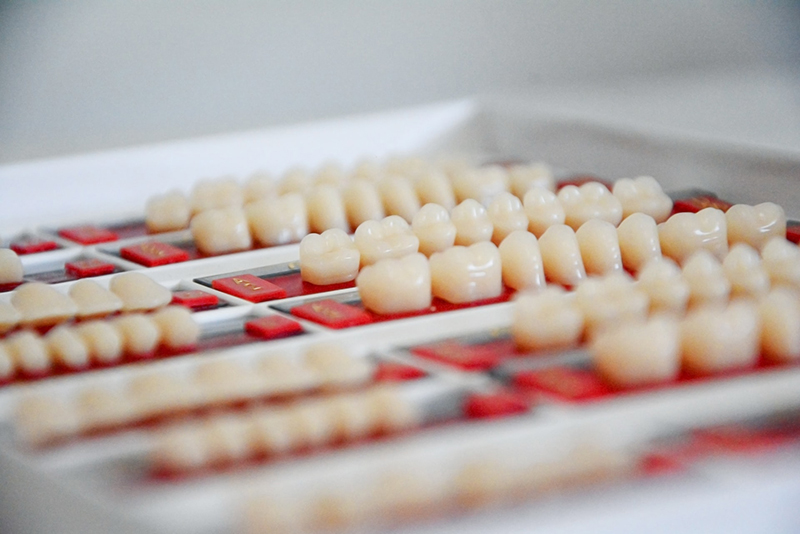Decayed teeth are no longer the death sentence that it was a century ago. With the help of modern medicine, the field of dentistry has gone a long way from animal bone dentures, and superstitious treatments. Now, whenever you experience severe tooth decay, dental professionals can restore it through dental crowns.
An artificial tooth cap made of porcelain, steel, composite resin, or gold, dental crowns can help in covering up large cavities, bridge missing teeth, fix cosmetic imperfections, and heal the infection.
However, despite the solution it provides, in unlikely cases, cavities can still grow underneath the dental crown, which can cause more pain as it can be harder to detect. So, what can you do if you suspect any cavity beneath your dental crown?
Diagnosis
Cavities are most likely to grow underneath a dental crown if they’re covering up an original tooth instead of an implant. Its purpose is to protect the tooth from bacteria and infection. However, the tooth enamel is still vulnerable to decay.
And, that should be the first thing that you should do in your dental crown aftercare routine, to determine what could have caused it and acknowledge any underlying damage. You can do that with this diagnosis routine:
1. Margin Decay
The dental crown is supposed to cover the entire tooth. However, there are times when along the gum line, a gap can be created. This space can leave your original tooth exposed and act as an entrance for acid, bacteria, and cavities.
Plaque can also accumulate and damage the enamel. So, if you ever have a hint or suspicion that an activity is forming along those gaps, consider having it checked right away before the damage spreads.
2. Chips and Tear
Dental crown durability and longevity will heavily depend on the material used. On average, a dental crown can last up to 10 years. For more expensive compounds they can even last up to 25 years.
Whatever material is used, wear and tear will always be expected. And, once these chips start to grow, they can turn into holes and become potential gateways for cavity-causing bacteria.
3. Botched Root Canal Procedure
Dentists do their best to remove all the cavities during a root canal treatment before covering it up with a dental crown. However, not all procedures will be 100% accurate, especially with molars that have a more complicated root canal system. So, in these cases, some of the decayed cavity is still left inside, and could still spread.
4. Loose Fitting
For dental crowns to work effectively, and protect your teeth from cavities, it has to be sealed tight and well-fitted. However, other factors like grinding, and eating tough foods right after the operation could dislodge its placement. This can lead to a loose fit, and gaps that bacteria can get into.
5. Neglected Hygiene
Teeth with dental crowns even with their extra protection still deserve the same cleaning and hygiene as the rest of your teeth. Keeping your gums and their adjacent teeth clean can protect your crowned teeth from potential infections.
So, to make sure that your mouth is always plaque and tartar free, visit clinics like familydentisttree.ca for a full and affordable treatment. Clinics can also perform x-rays to detect other underlying issues.
Treatment
Once it is confirmed that there is a cavity underneath your dental crown, your dentist can then proceed on removing it, without causing too much damage to the crown itself. Dentists and prosthodontists at clinics like Cosmo Dental Centre can help you with this, by either replacing or refilling your dental crown. For cavities that grow along the crown’s edges, this can easily be removed and drilled out.
You can easily contact them through their social media posts or by clicking the hyperlinked “visit my website” phrase. However, for those cases that reached the pulp chamber, the dentist will have to remove the crown and completely drill out the festering cavities.
A new crown will also have to be placed in worst cases where the teeth and the dental crown itself have deteriorated and are beyond saving. The dentist will have to remove it and offer to bridge the gap instead with a dental implant.
Prevention
The aftercare period of a dental crown procedure is its most crucial stage. Any miscalculation on the dentist’s and patient’s part can lead to loose fittings, openings, chips, and unexpected cracks. So, to make sure that these problematic scenarios are avoided, always practice good dental hygiene by flossing and brushing your teeth at least twice a day.
Eating tough foods, and extremely cold or hot beverages should also be avoided a day after the procedure, to prevent any dental crown damage.
Final Thoughts
Dental crowns may seem like a quick and permanent procedure in preventing tooth decay. However, that likelihood still falls on the patients themselves and how they take care of their teeth. The dentist can put as many dental crowns as they can, but if the patient fails to perform their oral care, then cavities will always be lurking in the corner. So, instead of waiting for a cavity to grow under your dental crown, prevent it now by practicing proper dental hygiene and regularly visiting your dentist.

